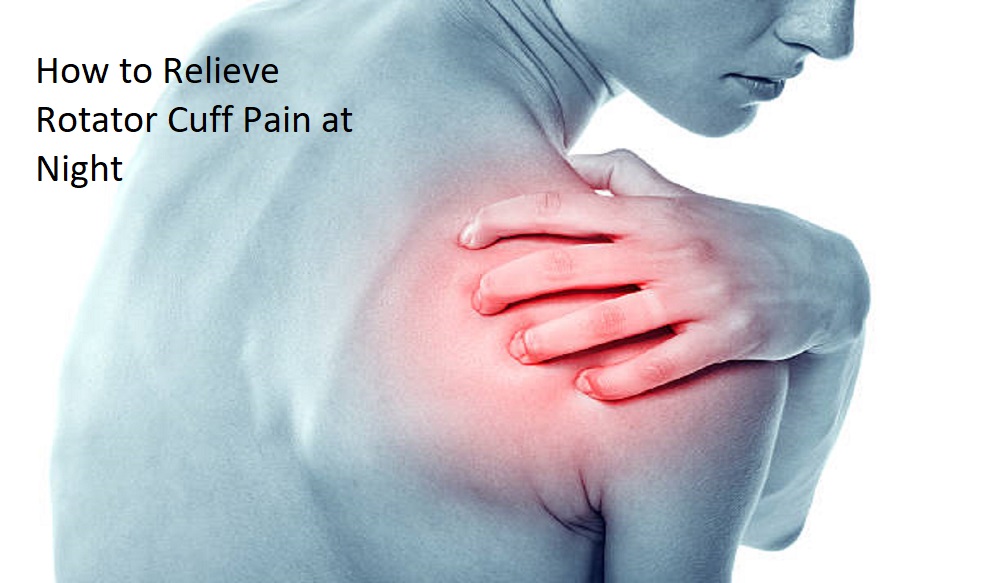Rotator cuff pain at night affects 91% of people with rotator cuff injury. In other words, you are not alone in this. It occurs at an unexpectedly high rate. If you’re experiencing nighttime rotator cuff discomfort, here are 5 simple strategies to help you get some rest.
How can the discomfort in your rotator cuff be relieve at night?
1. How to o to sleep with a rotator cuff injury
You can make some changes to your sleeping habits to alleviate rotator cuff pain. These will be different depending on how you like to sleep:
Side sleepers:First, you should stop sleeping on your painful shoulder.
Not only does it put pressure on your hurt shoulder, but it also makes the subacromial pain go up. (2) This causes more inflammation and pain in your rotator cuff muscles.
Next, you can sleep on your good arm and use your pillows to support yourself.
Here’s how you should put them:
- Under your head to keep your neck and shoulders in good position.
- Between your hurt arm and your body to give you suppor
- Between your knees to help position your lower back with your hips.
Sleepers on their backs:
Aside from using more pillows, using pillows with different shapes can help lower shoulder pain.
- Get a cervical and shoulder blade pillow to support your neck and upper back.
- Put a pillow under your injured arm’s elbow. This helps it stay in a normal position,
- which eases the pressure on your rotator cuff pain.
- Put another pillow under your knees for support.
The belly sleepers:
Most people who have hurt their rotator cuffs have trouble sleeping in this pose. So, if this is the position you want, do the following:
- Don’t put your hurt shoulder up high.
- Rest your head on a thin pillow. It will help your posture to improve and breathe more easily.
2. Simple and fast shoulder stretches:
Shoulder pain at night is made worse by tight muscles in the back of the shoulder.
These three shoulder moves can help you relax your muscles tissues and relieve rotator cuff pain:
The action of doing shoulder rolls:
- Assume a seated position on the periphery of your bed.
- Allow your upper limbs to remain in a relaxed position, extending downwards alongside your upper body.
- Take part in the action of inhalation while simultaneously elevating your shoulders in the direction of your ears.
- To do the exercise, extend your scapulae by rolling your shoulders posteriorly and constricting the muscles between your shoulder blades.
- Gently exhale while lowering your shoulders in a gradual manner.
- Perform this action a total of ten times.
The cross-body stretch has been modified:
- Lie on your hurt side and put your weight on your ribs.
- Pull your hurt arm across your body with your good arm.
- The stretch should be felt in the back of your shoulder.
- Hold for 30 seconds, then go back to the starting point.
- Do this three times.
3. It is advisable to apply a bandage to the shoulder region for the purpose of providing support and stability:
The elastic bandage serves as an external cuff, providing stability to the shoulder joint during movements such as tossing and turning in bed.
The following instructions outline the proper technique for wrapping the shoulder before to sleep.
- Wrap a 6-inch tape around your upper arm bone so that the roll goes toward your chest. This will be your place to start.
- Pull the wrap over your injured shoulder, across your chest, and under your armpit.
- Do the last step again, making sure that half of the last layer is on top of the first.
- Use a clip or tape to seal the end of the wrap.
4. Use a rubber ball to massage yourself:
When tissues around the shoulder are hurt, there are a few muscles that will be tight. So, you can rub the tight muscles to make them soft and flexible. The back of the shoulder blade is one place that needs to be rubbed. Rotator cuff is another area.
When you work on the tight muscle, you may feel pain and soreness. You won’t realize how painful these places are until you start massaging them. During the massage, the pain feels good, which is similar to how you feel after a good massage.
5. use ice/hot pack
Ice is good for rotator cuff tears:
When you first hurt your shoulder, icing it works just as well as giving yourself an injection of painkiller. Think about taking one 20 minutes before you go to sleep, but only if you’ve had rotator cuff shoulder pain for less than a week. To do that:
- Wrap your ice pack or cold compress in a thin sheet of clothes. This will avoid skin problems caused by the cold.
- Hold it over your shoulder for 20 minutes.
- You can use a stretchy tape to hold it in place
6. Heat to fix rotator cuff tears:
If you’ve had shoulder pain for more than a week, you should use a warm pad. It gets more blood to your tendons, which makes them less painful and less likely to cramp.Wrap a towel around your heat pad to keep the heat from going away. Use the same steps when working with ice.
7. Use pain relievers
NSAIDs are medications that reduce the levels of pain hormones such as prostaglandins. As a result, it lowers rotator cuff inflammation, which lessens discomfort.
Keep in mind that certain medicine might have adverse effects and are not meant to be used long term. Before taking any medicine , you should always check your doctor.
When should I schedule an appointment with my doctor?
If you are having these symptoms, see your doctor:
- Arm numbness
- Intolerable agony, particularly at night
- Progressive limiting of arm mobility
- Severe arm weakness
Why is my shoulder ache worse at night?
Even though rotator cuff injuries are most common in players who repeatedly move their arms over their heads, anyone can hurt their shoulder.Shoulder pain at night is usually caused by things like tendinitis, bursitis, biceps tendinopathy, impingement, or a torn rotator cuff.
Rotator cuff injury or tear can happen if any of the muscles in the rotator cuff are damaged or torn. The rotator cuff is a group of muscles and nerves that connect the top of the arm to the shoulder blade. Its job is to keep the shoulder stable and let the joint move easily. You need these muscles to lift your arm above your head and move it in front of and behind your back.
A lot of pain, weakness, and inability to move. Simple things like getting dressed, reaching behind your back, and reaching high can become very hard. Tendons in the shoulder wear down over time, which makes it more possible that the rotator cuff will tear or get hurt.
Because of gravity, sitting down can cause the rotator cuff to stretch and pull, which can make nighttime pain much worse.
Causes:
Most rotator cuff injuries happen because the muscle tissue slowly breaks down over time. The tendon can be irritated or damaged by doing the same thing over and over again or moving big things for long periods of time. The rotator cuff can also be hurt all at once if you fall or get into an accident.
Risk factors:
These things can make your rotator cuff more likely to get hurt:
- Age. As you get older, your rotator shoulder is more likely to get hurt. Most people who tear their rotator cuff are over 60 years old.
- Different kinds of jobs. If you do jobs like building or painting that require you to move your arm over your head a lot, it can hurt your rotator cuff over time.
- Certain games. Some kinds of rotator cuff problems are more likely to happen to people who play sports like baseball, tennis, and weightlifting.
- Family history. Rotator cuff problems could be caused by your genes.




